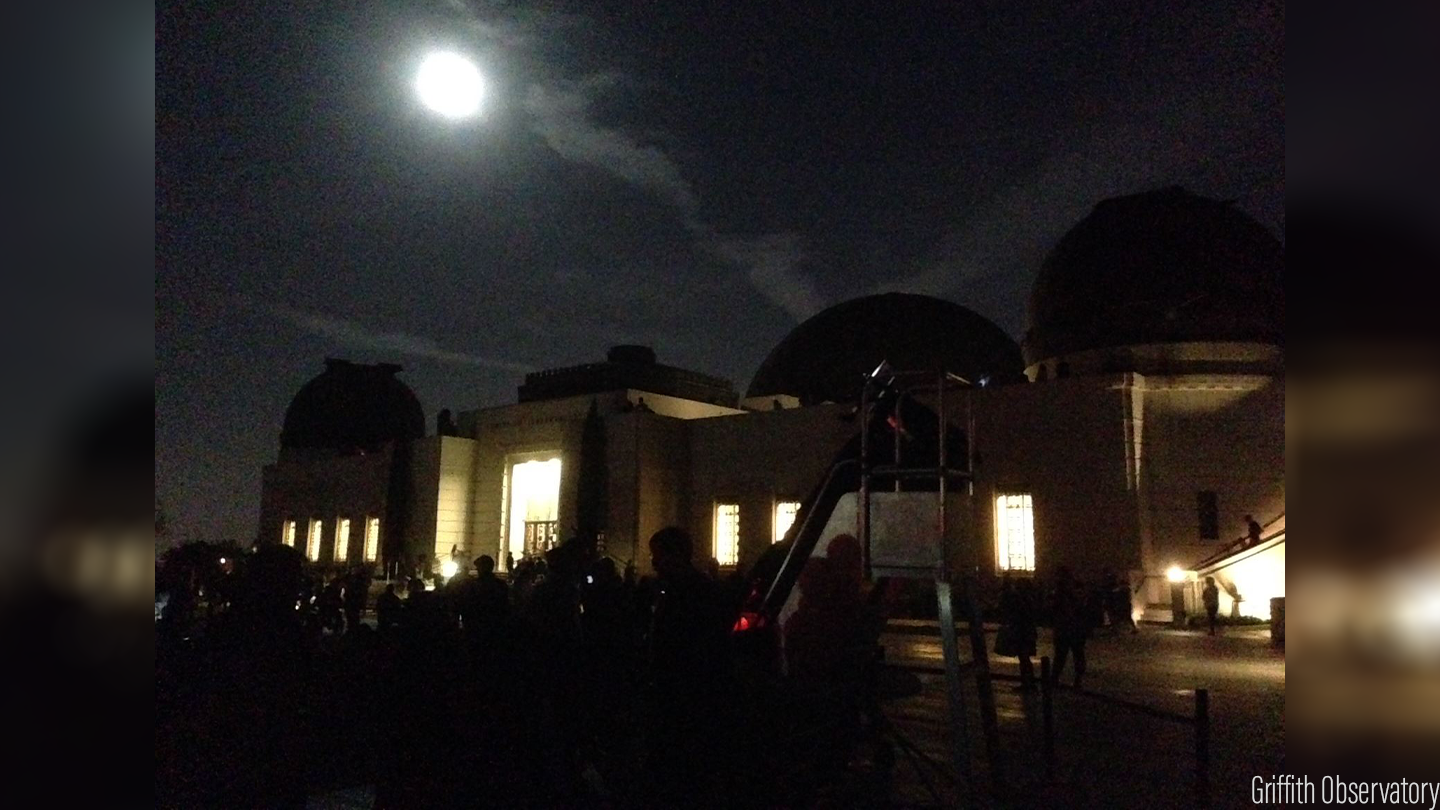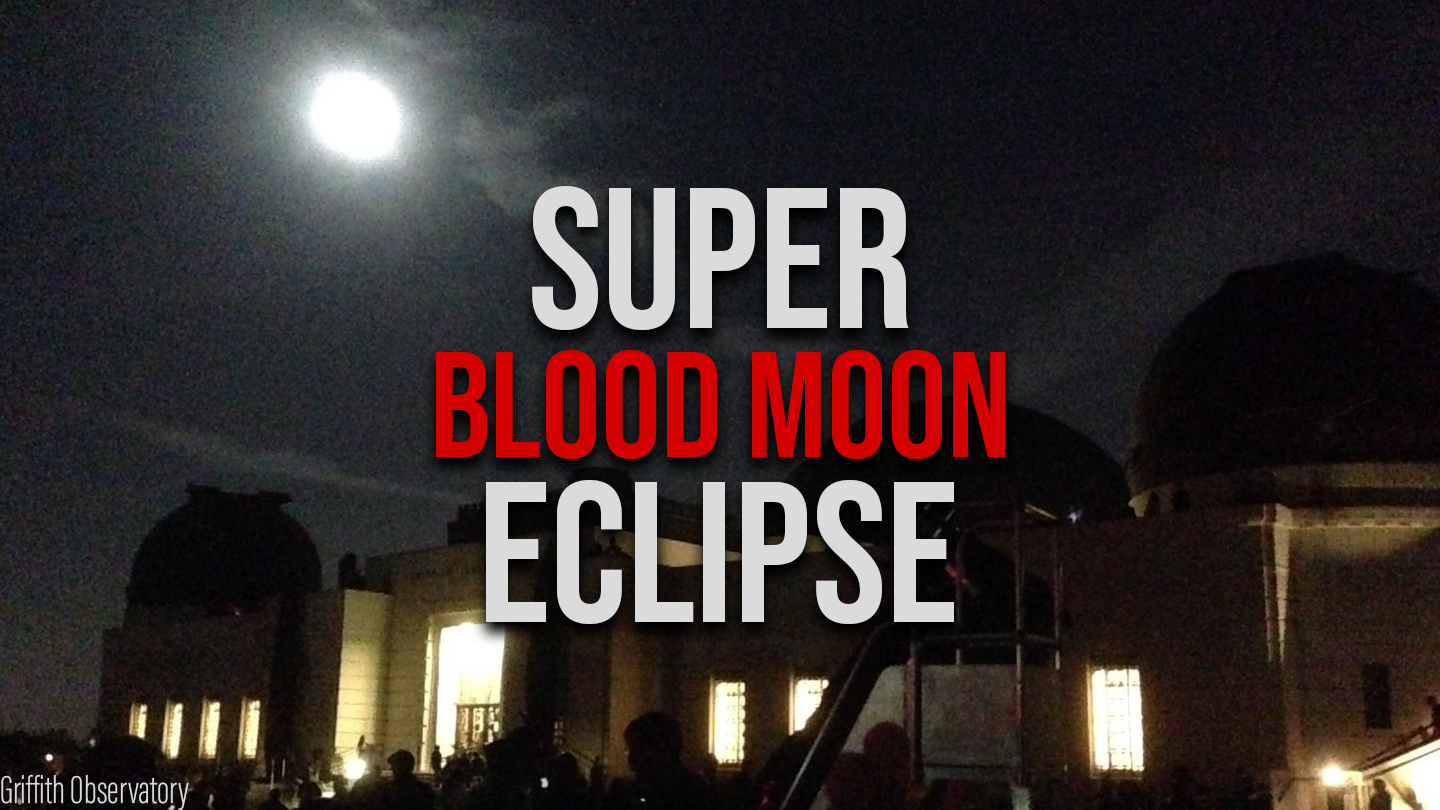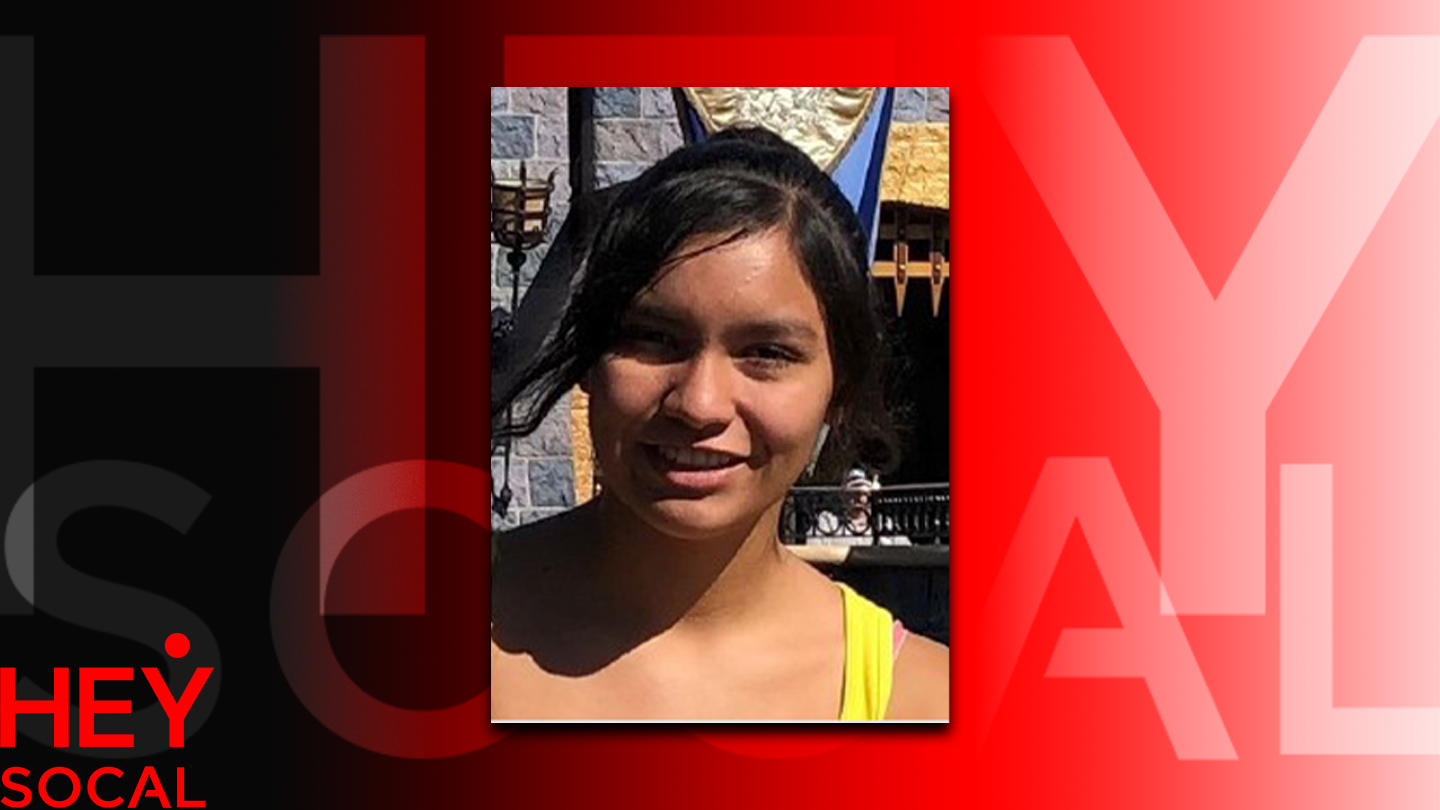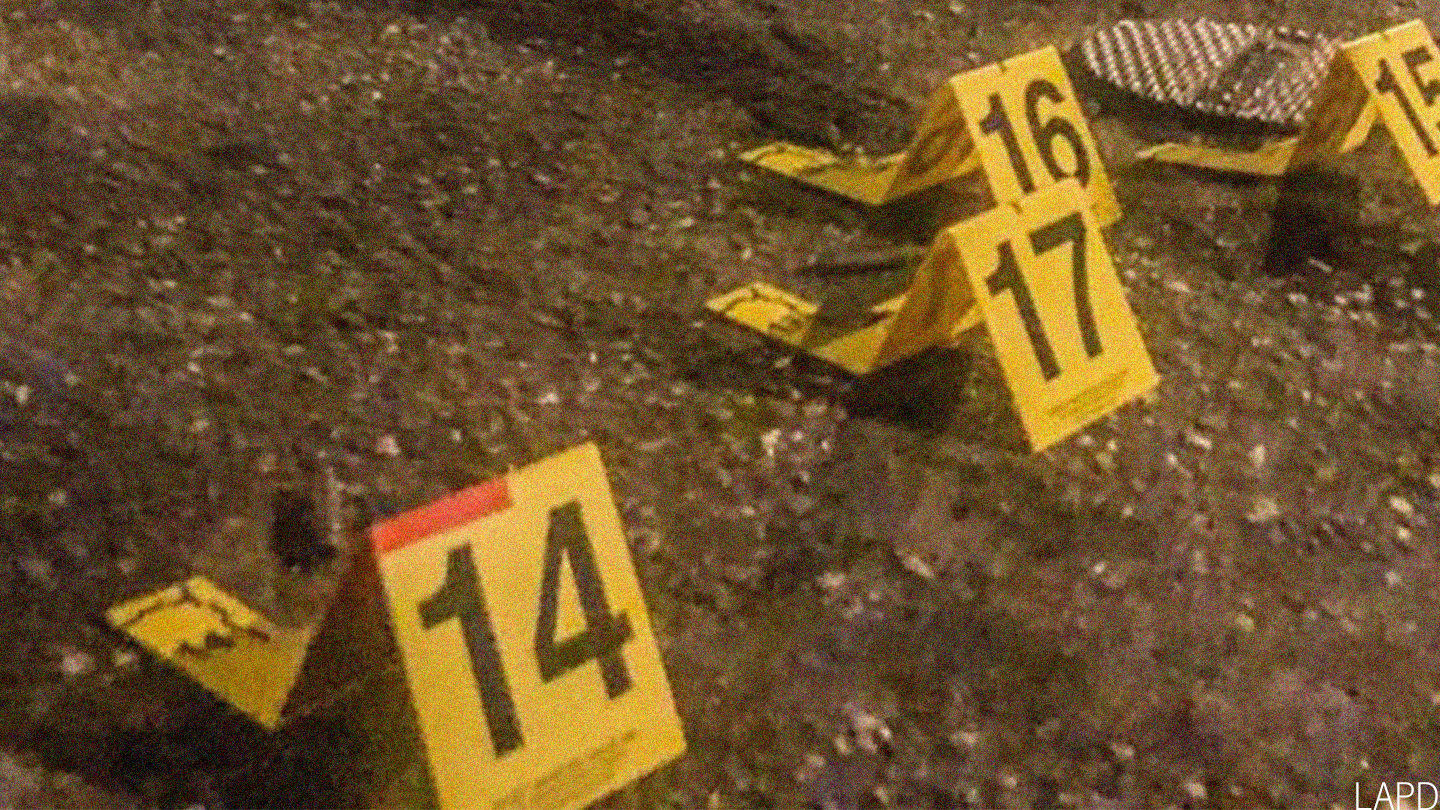If you need a reason to get out of bed in the wee hours Wednesday morning, the solar system will be offering a total lunar eclipse, in which the moon will appear to take on a dramatic blood red color.
The super “blood” moon will be visible in Southland skies at about 4:11 a.m. for a 15-minute show. The phenomenon should be easily visible by stargazers throughout Southern California, with the eclipse beginning at about 2:45 a.m.
The Griffith Observatory remains closed to the public due to the COVID- 19 pandemic and thus will be unable to host its normal in-person eclipse viewing. But the observatory is hosting a live feed of the entire event from 1:45 to 6 a.m.
WATCH THE ECLIPSE LIVE BELOW:
A full feed of the event is also available on the Griffith Observatory website.
A total lunar eclipse occurs when the moon passes completely into the shadow cast by the Earth. The round disk of the full moon slowly moves into the dark shadow, and the bright moon grows dim. The moon does not, however, become completely dark.

Instead, it glows with a copper or red hue, a result of sunlight being filtered and bent through the Earth’s atmosphere — much like a sunset.
Unlike solar eclipses, lunar eclipses are safe to look at, and visible with the naked eye without the need for any special equipment.
If you don’t make it out of bed to catch the show, you’ll have another chance next year. Another lunar eclipse visible from Los Angeles is expected on May 15-16, 2022.







